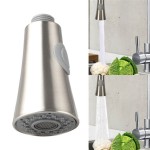Installing a kitchen faucet can seem like a daunting task. However, with the right tools and a little bit of guidance, it can be an easy and straightforward process. In this article, we’ll walk you through the steps of installing a kitchen faucet, from gathering the necessary tools to turning on the water and testing the faucet.
Gather the Necessary Tools
Before you begin the installation process, you’ll need to gather the necessary tools. You’ll need a basin wrench, adjustable wrench, screwdriver, plumbing tape, and a bucket, along with the faucet and any additional hardware that comes with it.
Prepare the Sink
Before you begin installing the faucet, you’ll need to prepare the sink. Make sure the sink is free of debris and that the supply lines are not kinked or damaged. If necessary, you can use a pair of pliers to straighten out the supply lines.
Install the Faucet
Once the sink is prepped, you can begin installing the faucet. Start by inserting the faucet into the sink and tightening the mounting nuts with the basin wrench. Make sure the faucet is secure before proceeding. Once the faucet is in place, use the adjustable wrench to tighten the supply lines and install the washers.
Connect the Water Lines
Once the faucet is in place and the supply lines are connected, you’ll need to connect the water lines. Start by turning off the water supply and draining the water lines. Use the adjustable wrench to connect the hot and cold water lines to the faucet. Make sure the connections are tight before turning the water supply back on.
Test the Faucet
Once the water lines are connected, it’s time to test the faucet. Turn on the water supply and turn the faucet handle to the “on” position. Make sure the water is flowing freely and that there are no leaks. If there are any leaks, tighten the connections again. Once the faucet is working properly, you’re finished!















Related Posts








